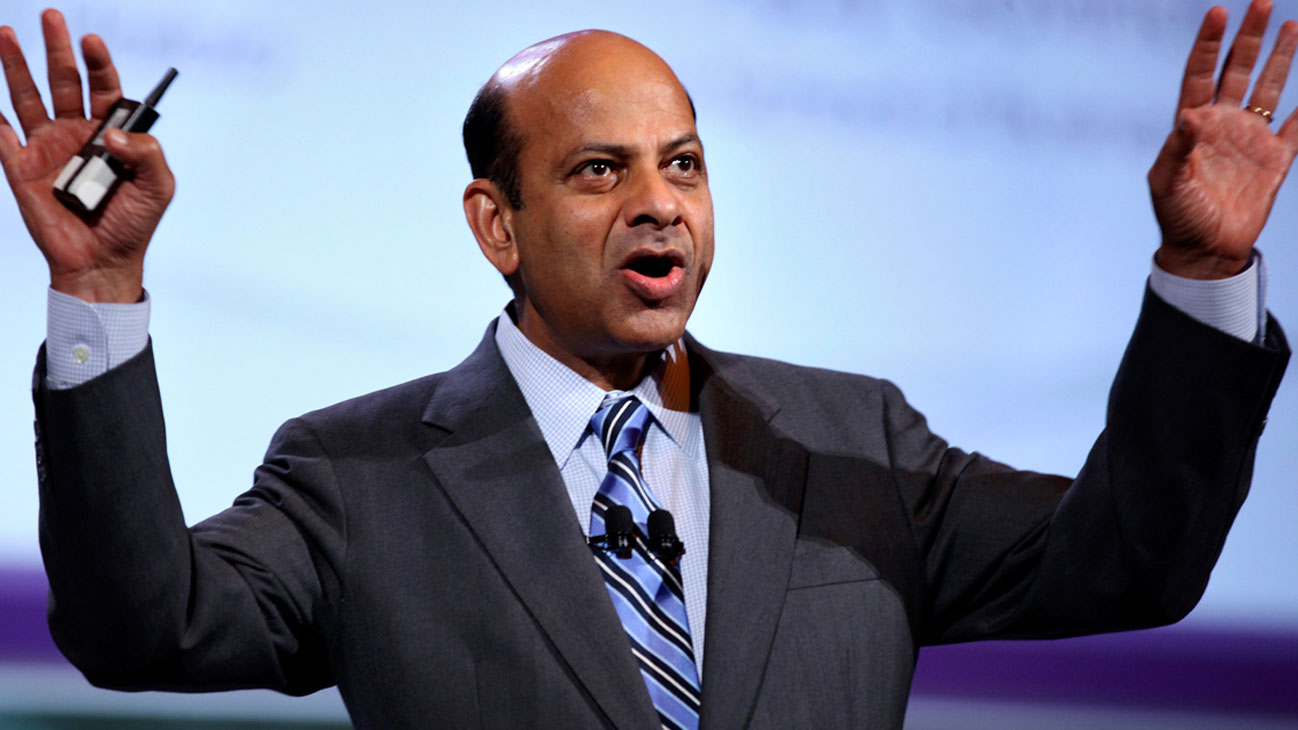Strategic Innovation Expert Vijay Govindarajan advises senior executives on how to achieve ambitions in a world of constant flux. In a recent column for The Harvard Business Review blog, Govindarajan turns his attention to leadership:
Here is a leadership lesson: Be selfish. Be very selfish.
For this message to be an effective leadership tip, we need to understand what selfishness is. Selfishness is typically defined as “concerned excessively or exclusively with oneself.” If someone hears that the CEO is being selfish, the thought that is likely to come to mind is, “The leader is maximizing personal financial rewards even at the cost of the company’s interests.” If that is the case, it is unfortunate and unacceptable. But there is a fundamentally different way to view selfishness. If leaders selfishly take care of their feelings, it will benefit not only them, but also everyone around them, including the companies they lead.
In order to achieve this, leaders must stop harming themselves and, instead, start benefiting themselves. Consider these questions: What are the mental aspects of selfishness that will help us as leaders? What are the mental states that cause us harm that we should reduce or eliminate, and the mental states that will give us benefits that we should acquire or increase?
The first step in becoming a selfish leader is to remove the harmful emotions and negativities that distract us from clear and effective decision making. Take anger, for example. Anger releases neurotransmitter chemicals known as catecholamines that give us a burst of energy. Our heart rate accelerates, our blood pressure rises, and our rate of breathing increases. Our attention narrows and becomes locked onto the target of our anger, and we can’t pay attention to anything else. We are now ready to fight or flee. In the jungle, all this would have been very helpful, but in the modern world where it gets bottled up behind a desk, it has nowhere to go and thus gets tangled within — or worse, spent outwardly toward our employees. The adrenaline-caused arousal that occurs during anger lasts many hours, sometimes days, and lowers our anger threshold, making it easier for us to get angry again later on. In other words, we can easily get trapped in the vicious circle of anger. Just ask yourself a simple question: “As a leader, have I ever made a good decision when I was angry and out of control?”
All negative states of the mind have similar effects. They create a tendency to suck us into a vicious circle. This list of negative states includes hatred, ill will, revenge, fear, ego, entitlement, jealousy, restlessness, anxiety, and depression. The chemicals that cause these feelings can build up over time, and the result is a whole host of psychosomatic diseases. By realizing that we are harming ourselves through these feelings and attempting to stop them for our own good, we are in effect helping ourselves and helping others at the same time. After all, we distribute what we have, magnified many times over. What you feed grows. If you feed anger, it grows. So when we have these negative states, we spread those negativities to others around us. This saps morale and reduces productivity. In other words, the most selfish thing we can do — for ourselves and for others — is to reduce or eliminate negative states.
The second step is to selfishly benefit oneself, and the biggest benefits we can give ourselves are positive states of mind: empathy, kindness, compassion, goodwill, pardon, egolessness, and gratitude. These positive states of mind release serotonin, oxytocin, and other related chemicals that reduce stress, improve our immune system, and drastically reduce our tendencies for psychosomatic diseases. As leaders, when we have positive states of mind, we start distributing those to others around us. We distribute what we have, magnified many times over. This creates a more congenial atmosphere, and improves morale and boosts productivity.
Equally important for leaders and decision makers is the fact that these chemicals improve the clarity of the mind (PDF) significantly, and help us to connect the dots and be creative, understand problems from multiple perspectives, get to the depth of problems quicker, and make quick decisions that are good for us and good for others. Who would have thought that focusing on yourself first can do so much?
There are many ways we can master this level of selfishness. One such approach is a meditation technique called vipassana, which means to see things as they really are (and not as they appear to be, as we want them to be, or as we imagine them to be). Business judgment of leaders is all about getting to quickly decipher what is not so evident at the surface level. When a leader is selfish, there is nothing clouding his or her understanding of the current reality as it is — not as he or she would like it to be, as it appears to be, or as the media describes it to be.
A word of caution: This is easy to understand, yet difficult to practice. But it’s incredibly worthwhile. Awareness of the fact that negative states harm us — whether or not they harm the person the negativity was targeted at — opens the doors to change.
We spread what we have within. When we are angry, we don’t limit that anger to ourselves. We magnify it and throw it on others. Similarly, when we have compassion, we spread that compassion. So as leaders, it is particularly important for us to be selfish — to care for our own state of being over anything else — so that we can then spread the selfishness far and wide.

